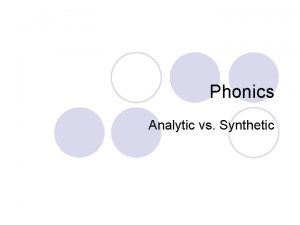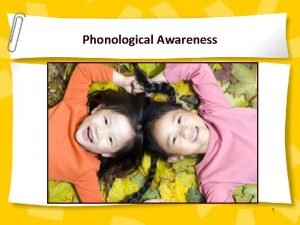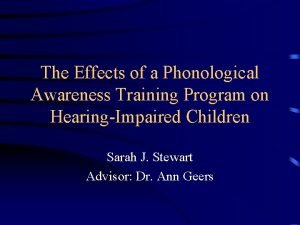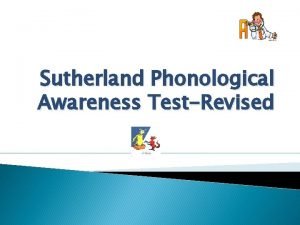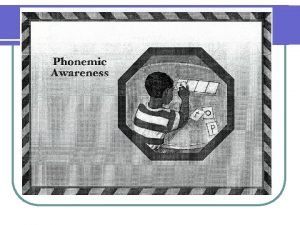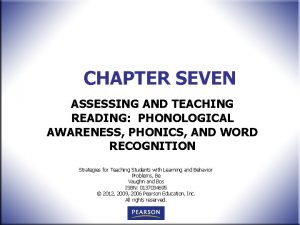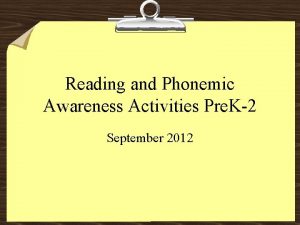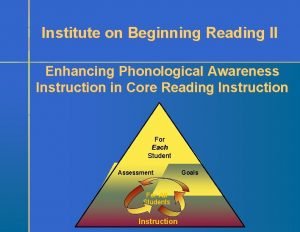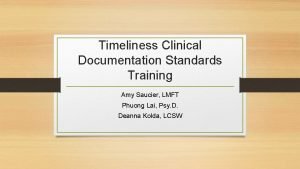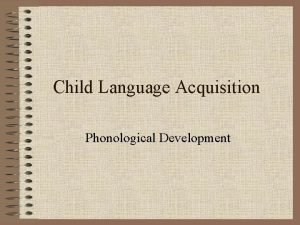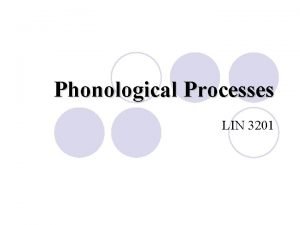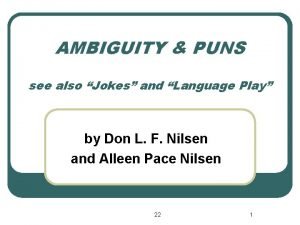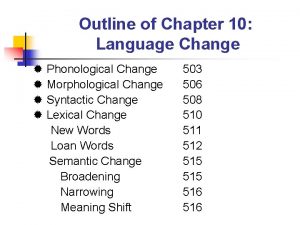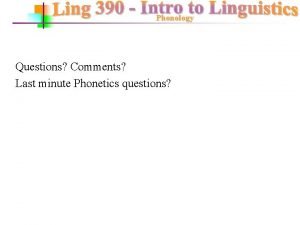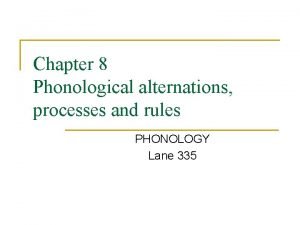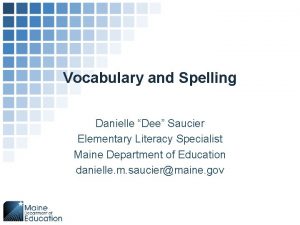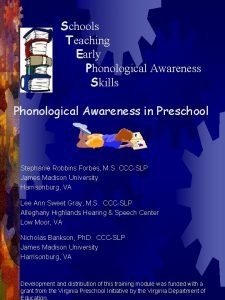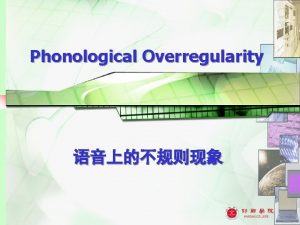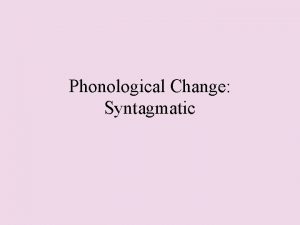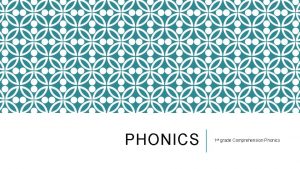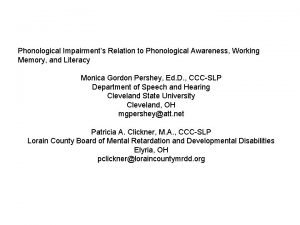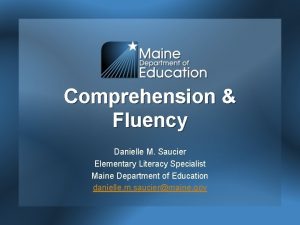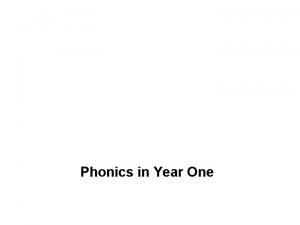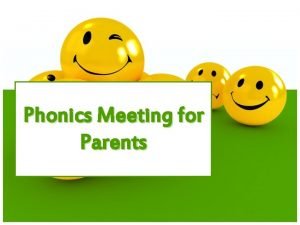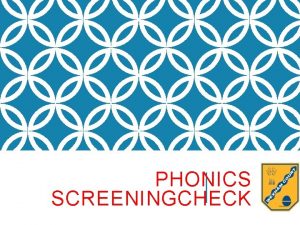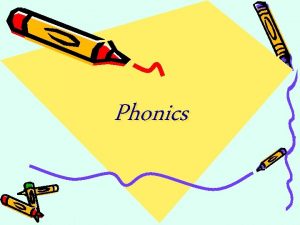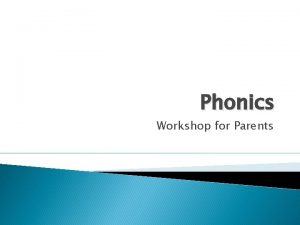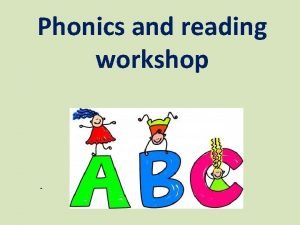SUPPORTING STUDENTS PHONOLOGICAL AWARENESS PHONICS Danielle Dee Saucier




















- Slides: 20

SUPPORTING STUDENTS: PHONOLOGICAL AWARENESS & PHONICS Danielle “Dee” Saucier Elementary Literacy Specialist and Aroostook County Regional Rep. Maine Department of Education danielle. m. saucier@maine. gov

Everyone will be muted You may keep your video on or off, that is up to you – of your connection is unstable it often helps to turn off video. If you have questions, concerns or comments feel free to post them in the comment box with your full name. I will do my best to answer in the presentation or a follow up email. I will try to review questions and answer as many as possible in a final Q & A session at the end. There will be a recording available There will be a survey and a link to a certificate at the end of the session. LARGE GROUP ZOOM NORMS

27 years in public education Classroom teacher Interventionist Department of Education -nearly 2 years Current Office Mates

FOUNDATIONAL READING SKILLS Foundational Literacy Comprehension Print Concepts Vocabulary & Language Phonological Awareness Fluency Phonics & Word Recognition Print Concepts Phonemic Awareness Phonics & Word Recognition Fluency Vocabulary & Language Comprehension

COMMON UNDERSTANDINGS OF KEY TERMINOLOGY Phonological Awareness Phonemic Awareness Phonics Decoding Encoding Automaticity Word Recognition Phoneme Graphemes Sound and Spelling Patterns Syllable Onset & Rime Blending Segmenting

Intentional instruction in phonological awareness and phonics is beneficial for all students and crucial for tangled learners. Students who can not distinguish and manipulate sounds orally have a much harder time making connections between sound and print which directly effect learning to read. We have 26 letters but 44 sounds. The skills we expect students to master in phonological awareness are directly opposite from everything they have learned prior to school age. POINTS TO PONDER

PHONOLOGICAL AWARENESS PROGRESSION

Oral Rhymes and Alliteration: Sing songs Poems Identifying words that rhyme Produce words that rhyme Distinguish between beginning sound of words Alliteration with two words that begin the same Change words to a new rhyme Words in Sentences: Use manipulatives to count words in a sentence Find word that is different Locate sound that is different

Syllables in Words: Count syllables Compound Words Identify first/middle/last syllables Onset and Rime in Words: Blend onset and rime Segment onset and rime Generate riming words with manipulatives

Phonemes in Words Identify if phonemes are the same (beginning, end, middle) Generate words that begin with the same phoneme Generate words that end with the same phoneme Identify phonemes at the beginning, end, and middle Change phonemes – start with beginning and end Isolate the phoneme – What is the sound in a certain place in the word? Blend the phonemes to make a word Segment the phonemes of a word into sounds Delete a phoneme – what part of the word is left? Count the phonemes – how many sounds are in cat?

FLORIDA CENTER FOR READING RESEARCH WWW. FCRR. ORG Resources (top) Student Center Activities (left) Divided into K-1, 2 -3 and 4 -5 Teacher Resource Guides Topics Phonological Phonics Awareness

Phonics brings print into the picture and makes connections to the phonological awareness skills. Students learn to match sounds to the letter or letters that represent the sounds in print. Phonics instruction should be in a logical, organized sequence. Children need frequent, authentic opportunities for practice.

ANALYTIC PHONICS VS. SYNTHETIC PHONICS

BASIC PHONICS SKILLS 1. Learning letter sounds 2. Learning letter formation 3. Blending letter sounds 4. Segmenting sounds in words 5. “Tricky” or “High-frequency” words

Letter formation – Handwriting without tears one example Many examples Lots of practice Pay attention to pencil grip

Blending – leading to reading They have started this orally and now they are moving to print Students can blend words sound by writing or reading one sound at time. Teacher models Start with smaller words Practice with the decodable words that align with the sounds learned. No such thing as too much practice. Make opportunities for authentic practice in words and decodable texts.

Segmenting – leading to writing They have started this orally and now they are moving to print Students must segment an record the sounds they hear Teacher models with magnetic letters and sharing the pen Start with smaller words Practice with the decodable words that align with the sounds learned through single words then words and phrases in dictation. No such thing as too much practice. Make opportunities for authentic practice independent writing.

Some words cannot be decoded Students need to read and spell these words Introduce – talk about, often fun to try to read with sounds for students to understand what makes it tricky Review and practice Look, copy, cover, write, check Word walls Include practice in authentic places Play games, find them in reading, practice daily as you add more. SOMETIMES WORDS ARE JUST TRICKY


https: //bit. ly/2 yr. Fyn 9 IF YOU ARE UNABLE TO ACCESS THE SURVEY WITH THE BITLY LINK OR THE QR CODE PLEASE EMAIL ME (DANIELLE. M. SAUCIER@MAINE. GOV ). THE LINK TO THE SURVEY IS THE METHOD BY WHICH YOU WILL RECEIVE A CERTIFICATE OF PARTICIPATION. THANK YOU FOR YOUR PARTICIPATION!
 Synthetic vs analytic phonics
Synthetic vs analytic phonics Phonological awareness continuum chart
Phonological awareness continuum chart Phonological awareness training program
Phonological awareness training program Sutherland phonological awareness test
Sutherland phonological awareness test Phonological awareness
Phonological awareness Crac marzollo
Crac marzollo What is letter sound relationship
What is letter sound relationship Substitute phonemes
Substitute phonemes Phonological awareness skills from easiest to hardest
Phonological awareness skills from easiest to hardest Amy saucier
Amy saucier Carpenters tool used to drive and pull nails
Carpenters tool used to drive and pull nails Cvs privacy awareness and hipaa privacy training
Cvs privacy awareness and hipaa privacy training Rizal carved the image of the blessed virgin mary on a
Rizal carved the image of the blessed virgin mary on a Fossilization in language
Fossilization in language Phonological development in child language acquisition
Phonological development in child language acquisition Assimilation rules in phonology
Assimilation rules in phonology Phonetic ambiguity examples
Phonetic ambiguity examples Lexical ambiguity jokes
Lexical ambiguity jokes Old english vs modern english
Old english vs modern english Onset coda and nucleus
Onset coda and nucleus Phonological alternation examples
Phonological alternation examples
